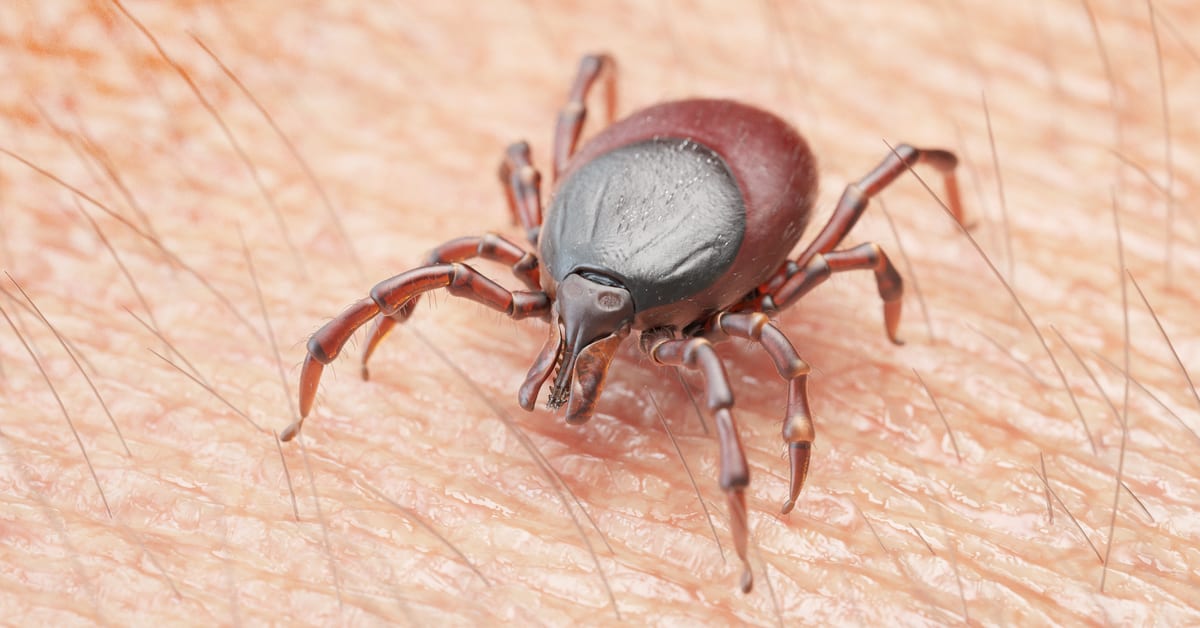The Life Cycle of a Deer Tick
Did you know that deer tick (also known as the black-legged tick, Ixodes scapularis) nymphs are about the size of a poppyseed?
Ticks must be attached for about 36 to 48 hours or more to transmit Lyme disease. Because the tiny size of deer tick nymphs makes them hard to detect, they’re more likely to give humans Lyme disease.
If you take a look at deer tick life cycle pictures, you’ll notice how deer ticks have four stages: egg, larva, nymph, and adult. Deer tick larvae are even tinier than nymphs and can spread other diseases.
To help prevent Lyme disease, you want to understand the tick life cycle seasons, since in certain months the risk is higher than others.
Deer Tick Life Cycle
1. Eggs
The deer tick life stages complete a cycle that lasts two years. At the end of its two-year lifespan, an adult female tick will lay somewhere between 1500 to 4000 eggs beginning in late May.
Deer ticks don’t lay eggs on their host, but most often in sheltered, grassy areas. They may also lay eggs in houses near baseboards, windows, furniture, rugs, coat linings, and curtains.
These eggs hatch later in the summer.
2. Larvae
Deer tick larvae hatch late in the summer months. At this stage, they have 6 legs and are very tiny, smaller than a flea.
Larvae are most active July-August. They don’t feed on humans as often, but they can still spread disease.
Larvae growth peaks in August. When they finish feeding on a host and are full of blood, they fall to the ground and become dormant. They use the blood stored in their stomachs as energy to molt and grow into nymphs.
Ticks are inactive when temperatures drop below 45 degrees Fahrenheit, so you’re less likely to get bitten in the winter months. You still want to take precautions if you go hiking on an unusually warm day.
3. Nymphs
Nymph ticks become active in the spring when the warmer weather wakes them and they start searching for a larger host. They have 8 legs and are about the size of a poppyseed or a flea.
During the months of May, June, and July, nymphs actively seek hosts by hiding in tall blades of grass, or on trees. June, July, and August are the most common months people contract Lyme disease.
When a nymph finds a host, it will feed on it for four or five days. If the nymph was infected with Lyme in its larval stage, it could infect the new host.
If the nymph was not infected, it could become infected at this stage.
4. Adult
After becoming engorged, deer tick nymphs molt into an adult male or adult female during the autumn months. The females will seek a large host (white-tailed deer, dogs, horses, cattle). Adult males don’t feed; they seek a female to mate with.
Adults ticks on humans are easier to spot and remove. Because adults are hairy and can blend in with fur, you’ll want to check your pets, especially during the fall and spring.
Dog ticks are also common, and they don’t carry Lyme disease. Dog ticks are larger than deer ticks and have brownish/greyish legs. Deer ticks have black legs and a flatter body.
Take Precautions
Early detection is key to avoid catching diseases from ticks. You’ll want to take extra precautions from early spring until early autumn. Study deer tick life cycle pictures, and check yourself thoroughly for deer tick larvae and nymphs after hiking.
For the most environmentally friendly pest and wildlife control in New Jersey, check out our website.

